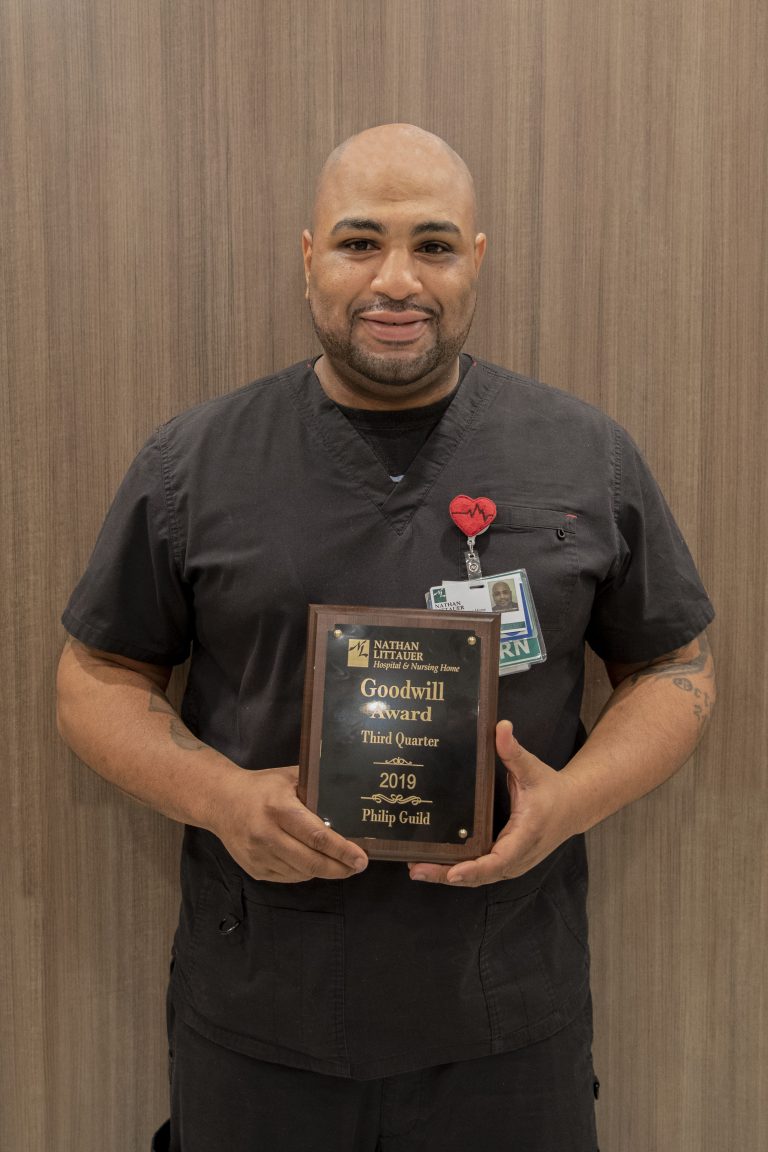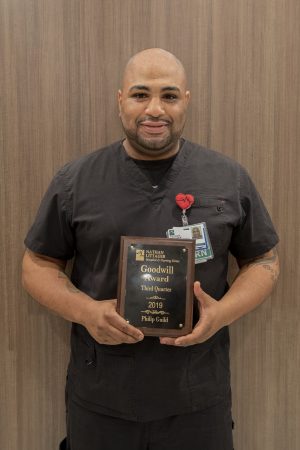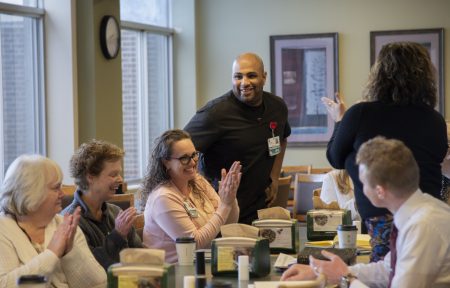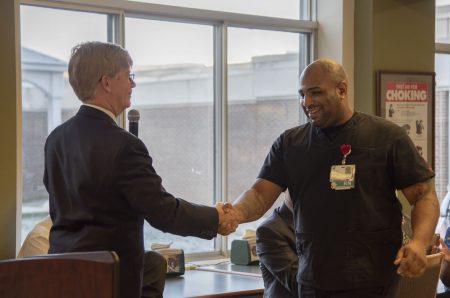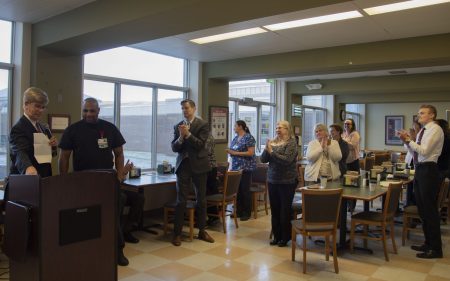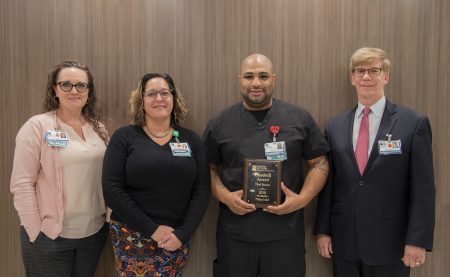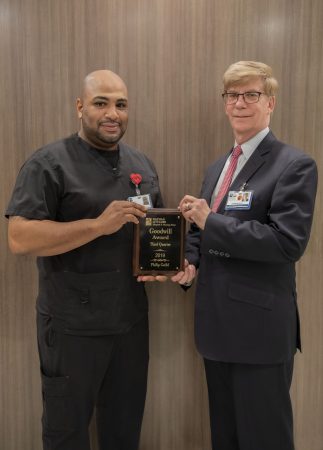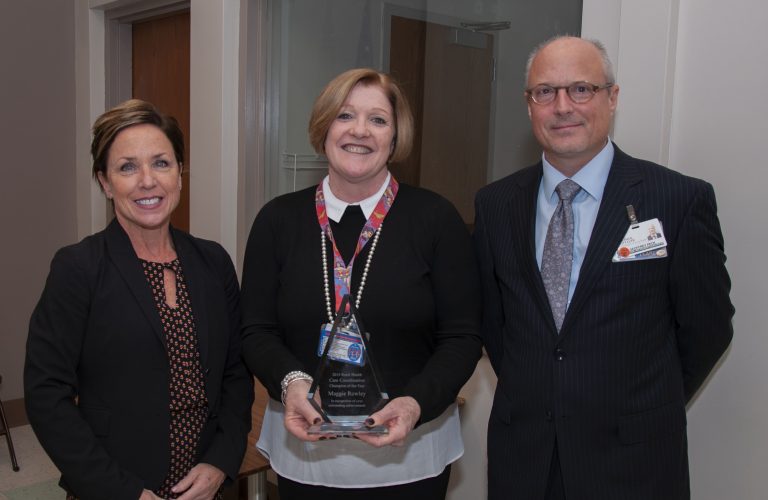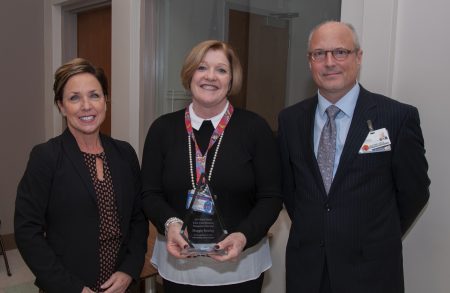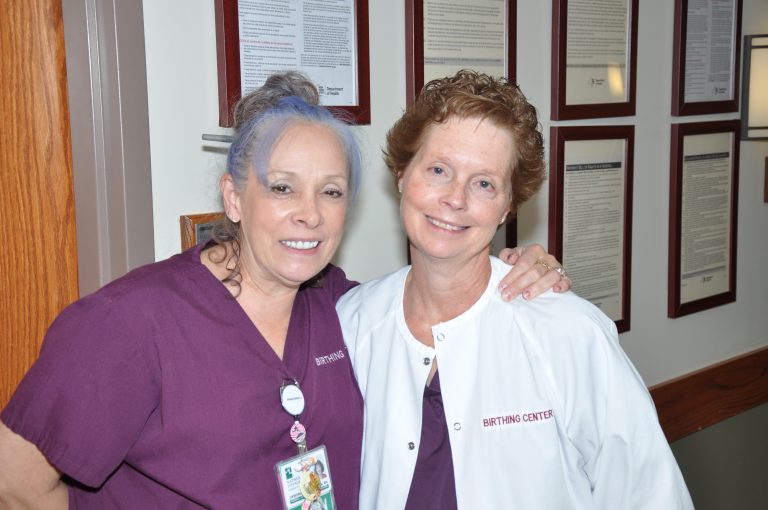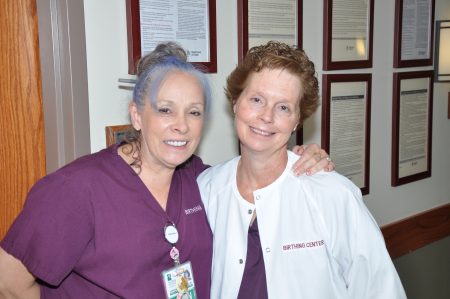Nathan Littauer Hospital & Nursing Home’s Eileen Breckenridge, RN, Nurse Educator, and Nursing Administration Supervisor was recently elected as the Secretary of the New York State Emergency Nurses Association (ENA). Eileen will serve the ENA in this position on the Board of Directors for two years. She currently serves the ENA as the President of the Adirondack Chapter.

(Left) Eileen Breckenridge accepts the election to serve as Secretary on the ENA’s Board of Directors from the President of the New York State ENA, Mary Ann Teeter. (Right)
“It is one of the most educational and inspiring processes I have ever been involved with,” says Eileen.
The ENA is an international professional organization with approximately 43,000 members worldwide. In New York State alone, there are 2,600 members divided into three chapters. The Adirondack Chapter of the ENA is the largest chapter that exists within the ENA. The ENA’s mission is to provide evidence-based education to establish quality care for the emergency care patient.
Eileen has been an active member of the ENA for ten years. In her newly elected position, Eileen says her goal is: “To help foster and develop future instructors ensuring the integrity of the courses the ENA provides.” She will also continue to develop programming for the New York State ENA Conference.
The ENA was originally founded by two nurses; one nurse that resides in New York and another that resides in California. Later in 2020, the ENA will celebrate its 50th anniversary commemorating the merging of the state committees. To mark the occasion, October 14, 2020, the Empire State Building will be illuminated purple, celebrating the ENA’s achievements.
“Nathan Littauer Hospital & Nursing Home is proud to have such distinguished nursing staff like Eileen,” says Cheryl McGrattan, Vice President of Marketing with Littauer. “Our nurses not only focus on delivering excellent patient care, but their willingness to create meaningful educational opportunities for nurses at all stages of their careers is inspiring.”
“This is a great thing,” Eileen continues. “The ENA is an organization of renowned nursing professionals. We’re leading the charge and it’s giving us a big voice.”
###
About Nathan Littauer
Nathan Littauer Hospital and Nursing Home is a full-service, 74 bed acute care hospital with an 84 bed skilled nursing home. Since 1894, Nathan Littauer has provided safe, high-quality health and wellness services with a focus on securing appropriate new technologies for people residing in Upstate New York. Over the years, the hospital has expanded its services in order to offer health care that is comprehensive, accessible, and relevant to the needs of the communities they serve. More information can be found by visiting www.nlh.org.


